Related Research Articles
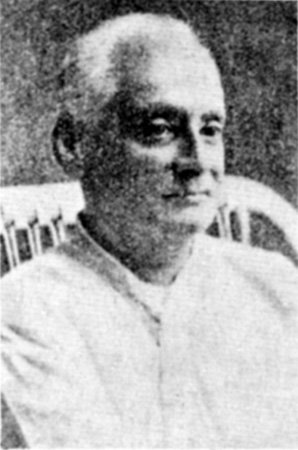
Gaganendranath Tagore was an Bengali painter and cartoonist of the Bengal school. Along with his brother Abanindranath Tagore, he was counted as one of the earliest modern artists in India.

Indian art consists of a variety of art forms, including painting, sculpture, pottery, and textile arts such as woven silk. Geographically, it spans the entire Indian subcontinent, including what is now India, Pakistan, Bangladesh, Sri Lanka, Nepal, and at times eastern Afghanistan. A strong sense of design is characteristic of Indian art and can be observed in its modern and traditional forms.

The Bengal School of Art, commonly referred as Bengal School, was an art movement and a style of Indian painting that originated in Bengal, primarily Kolkata and Shantiniketan, and flourished throughout the Indian subcontinent, during the British Raj in the early 20th century. Also known as 'Indian style of painting' in its early days, it was associated with Indian nationalism (swadeshi) and led by Abanindranath Tagore (1871–1951), but was also being promoted and supported by British arts administrators like E. B. Havell, the principal of the Government College of Art and Craft, Kolkata from 1896; eventually it led to the development of the modern Indian painting.
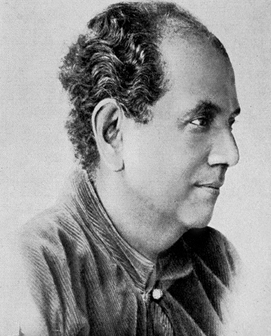
Abanindranath Tagore was the principal artist and creator of the "Indian Society of Oriental Art". He was also the first major exponent of Swadeshi values in Indian art. He founded the influential Bengal school of art, which led to the development of modern Indian painting. He was also a noted writer, particularly for children. Popularly known as 'Aban Thakur', his books Rajkahini, Buro Angla, Nalak, and Khirer Putul were landmarks in Bengali language children's literature and art.

Indian painting has a very long tradition and history in Indian art, though because of the climatic conditions very few early examples survive. The earliest Indian paintings were the rock paintings of prehistoric times, such as the petroglyphs found in places like Bhimbetka rock shelters. Some of the Stone Age rock paintings found among the Bhimbetka rock shelters are approximately 10,000 years old.

Nandalal Bose was one of the pioneers of modern Indian art and a key figure of Contextual Modernism.

Ramkinkar Baij was an Indian sculptor and painter, one of the pioneers of modern Indian sculpture and a key figure of Contextual Modernism.

Bharat Mata is a work painted by the Indian painter Abanindranath Tagore in 1905. However, the painting was first created by Bankim Chandra Chatterjee in the 1870s. The work depicts a saffron-clad woman, dressed like a sadhvi, holding a book, sheaves of paddy, a piece of white cloth, and a rudraksha garland (mala) in her four hands. The painting was the first illustrated depiction of the concept and was painted with Swadesh ideals during the larger Indian Independence movement.
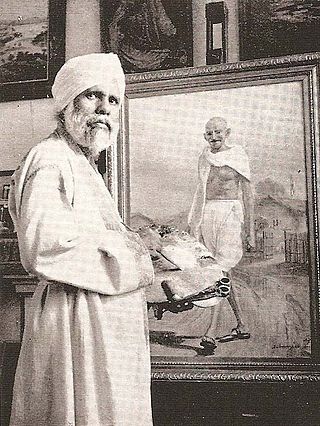
S. G. Thakur Singh (1899–1976) was an Indian artist who painted in oils, pastels and water colour
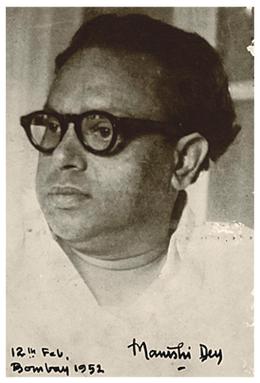
Manishi Dey was an Indian painter of the Bengal School of Art. Manishi Dey was the younger brother of Mukul Dey, a pioneering Indian artist and dry point etcher. Their two sisters, Annapura and Rani, were accomplished in arts and crafts as well.

The modern Indian art movement in Indian painting is considered to have begun in Calcutta in the late nineteenth century. The old traditions of painting had more or less died out in Bengal and new schools of art were started by the British. Initially, protagonists of Indian art such as Raja Ravi Varma drew on Western traditions and techniques including oil paint and easel painting. A reaction to the Western influence led to a revival in primitivism, called as the Bengal school of art, which drew from the rich cultural heritage of India. It was succeeded by the Santiniketan school, led by Rabindranath Tagore's harking back to idyllic rural folk and rural life. Despite its country-wide influence in the early years, the importance of the school declined by the 'forties' and now it is as good as dead.

Nirode Mazumdar was an Indian painter from the first generation of modernists, and a key member of the Calcutta Group. Almost a forgotten figure today, he strode the art scenario from the 40's like a colossus. Long before his other contemporaries recognised the importance of symbolism, he applied them generously to achieve his philosophical and artistic aspirations. His paintings are based on what he called 'constructive symbolism'. A significant artist of the last century, he was almost a cult figure amongst the art fraternity and a titan of 20th century modernism.

Raman Siva Kumar, known as R. Siva Kumar, is an Indian contemporary art historian, art critic, and curator. His major research has been in the area of early Indian modernism with special focus on the Santiniketan School. He has written several important books, lectured widely on modern Indian art and contributed articles to prestigious international projects such as the Art Journal, Grove Art Online or The Dictionary of Art, Oxford University Press.
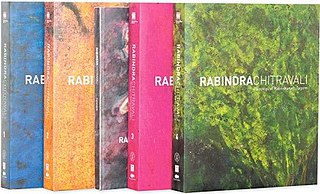
Rabindra Chitravali is a 2011 four-volume set of books by art historian R. Siva Kumar that contains paintings of Rabindranth Tagore. These include about 1700 paintings in the Rabindra Bhavana and Kala Bhavana collections of Visva-Bharati, Santiniketan; and more than 300 paintings in the collection of the National Gallery of Modern Art and the collections at Rabindra Bharati University, Kolkata; National Gallery of Modern Art, New Delhi and Bangalore; and Indian Museum, Kolkata.

Kala Bhavana is the fine arts faculty of Visva-Bharati University, in Shantiniketan, India. It is an institution of education and research in visual arts, founded in 1919, it was established by Nobel laureate Rabindranath Tagore.

The Last Harvest: Paintings of Rabindranath Tagore is a book on Rabindranath Tagore (1861–1941) and his paintings edited by R. Siva Kumar. In 2011 it was produced in conjunction with the traveling exhibition The Last Harvest: Paintings of Rabindranath Tagore.
Santiniketan: The Making of a Contextual Modernism was an exhibition curated by R. Siva Kumar at the National Gallery of Modern Art in 1997, on the occasion of the 50th anniversary of India's Independence.

K. Venkatappa (1886–1965) was a pioneer painter, sculptor and an exponent of veena. He was born into a family of court painters in the princely state of Mysore, present day Karnataka. He was a pupil of Abanindranath Tagore. He was best known for his watercolors, with sensible realism. His Ootacamund watercolors reflect his independent vision.

The Passing of Shah Jahan is a Miniature painting, painted by the Indian artist Abanindranath Tagore in 1902. The painting depicts a scene in which the fifth Mughal Emperor Shah Jahan stares upon the Taj Mahal on his deathbed, with his daughter Jahanara Begum at his feet. Initially involved with the dominant style of European Naturalism, Tagore's mentor Ernest Binfield Havell had introduced him to various types of Indian art. Of these varieties, Tagore was most impressed with old Mughal miniatures, which often featured emotionless, but detailed illustrations of scenes and characters. Incorporating this style with the traditional Indian artistic concept of Bhava', or emotion, Tagore had painted a scene based upon the growing re-interest in Indian history during the British Raj.

Bireswar Sen (1897–1974) was an Indian painter, writer, and teacher, who was influenced by the Bengal School of Art and Western modernism, but then later developed a unique visual language of miniatures. He depicted grand landscapes, mostly featuring the Himalayas, on paintings measuring smaller than postcards. Sen was popular and celebrated during his lifetime, but faded from public consciousness after his death.
References
- ↑ Amazon.com: Paintings Of Abanindranath Tagore: R. Siva Kumar: Books. amazon.com. ISBN 9788189323097.
- ↑ "Abanindranath Tagore: a reappraisal". artnewsnviews.com. Archived from the original on November 1, 2011. Retrieved 2014-12-25.
{{cite web}}: CS1 maint: unfit URL (link) - ↑ "Pratikshan :: Books in Books On Art". pratikshanbooks.com. Archived from the original on 2014-03-02. Retrieved 2014-12-25.
- ↑ Vajpeyi, A. (2012). Righteous Republic: The Political Foundations of Modern India. Harvard University Press. p. 279. ISBN 9780674067288 . Retrieved 2014-12-25.